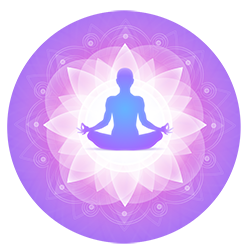Introduction
Pratyahara is the fifth of the eight-limbed practice of Ashtanga Yoga introduced in Patanjali’s Yoga Sutras: a roadmap to peace through meditation. The Yoga Sutras – essentially a poem comprised of fewer than 200 partial sentences arranged in four chapters – is one of two widely recognized authoritative texts on Raja Yoga.
Pratyahara (transliterated as “withdrawal from the senses”) refers to concentration of the conscious mind; it is often practiced by silent recitation, essentially stringing together individual, sequential thoughts – often rhythmically – to momentarily control the content and flow of thoughts.
The stated, penultimate goal of the Yoga Sutras is to all-but-eliminate conscious thought – since at that point, without thoughts to interfere, we are conscious only of our own true nature.
Science
The four functions of your mind are:
1) Buddhi – this is your conscious mind – and the focus of the Yoga Sutras. At any given moment, you are conscious of whatever is reflected in this part of our mind. This is the aspect of mind that gets us in trouble – sometimes referred to as the “monkey mind” as we often seem at a loss to control what’s reflected therein.
2) Manas – this is your sub-conscious or sensory mind which works behind the scenes, automatically processing senses and basic bodily functions.
3) Ahamkara – this is your mental foundation: it’s the most elemental aspect of your ego: the awareness that you are a unique being – separate and apart from everything else.
4) Chitta – this is the storage aspect of your mind: your memories which still have karmic potential (i.e., to the extent the ripples of your past actions haven’t caught up with you yet, the corresponding karmic triggers are stored here).
Context
Patanjali introduces Ashtanga Yoga in Chapter 2, yet splits the discussion of the eight limbs between Chapters 2 and 3: concluding Chapter 2 with remarks on Pratyahara, and beginning Chapter 3 with a discussion of the last three limbs, signaling that Pratyahara is more akin to the first four, than the last three.
Pratyahara is the fifth in a sequence of progressively subtle exercises or practices intended to settle your conscious mind for meditation:
• Yama & Niyama – presented first, these two limbs of Ashtanga Yoga are the most important as they have the greatest impact on your peace of mind. The Yamas & Niyamas constitute a code of conduct intended to balance your actions; specifically, to mitigate the negative consequences thereof.
Note: of the 25 sutras devoted to Ashtanga Yoga in Chapter 2 (i.e., a little over 10% of Patanjali’s entire Yoga Sutras), 15 (60%) discuss these two sutras (“conduct”); three discuss Asana (“posture”); five discuss Pranayama (“breath”); and 2 discuss Pratyahara (“concentration”).
• Asana – Patanjali encourages us to learn to sit still and comfortably to facilitate meditation;
• Pranayama – Patanjali encourages us to learn to breathe deeply and subtly to facilitate meditation, as breathing exercises stimulate/calm circulation of our elemental energetic building blocks;
• Pratyahara – Patanjali encourages us to learn to concentrate (i.e., to fully-engage our conscious mind) to quell the effects of desire – the product of ego, memory and the senses – to facilitate meditation; the intent of Pratyahara is to turn one’s attention or awareness from the sensory to the thinking mind – and to begin to learn to control its content and flow.
The longer you can sit comfortably, breathe deeply and subtly, and hold the content and rhythm of your thoughts steady, the longer and more effectively you’ll be able to meditate.
Summary
When you’re sitting comfortably, breathing deeply and subtly, and controlling the rate, rhythm and content of your conscious thoughts, there is a synchronization of sorts between your heartbeats, breaths, and thoughts – a calmness that prepares you for the last three limbs of Ashtanga Yoga which involve further refining the content of your conscious mind by progressively narrowing its focus.



